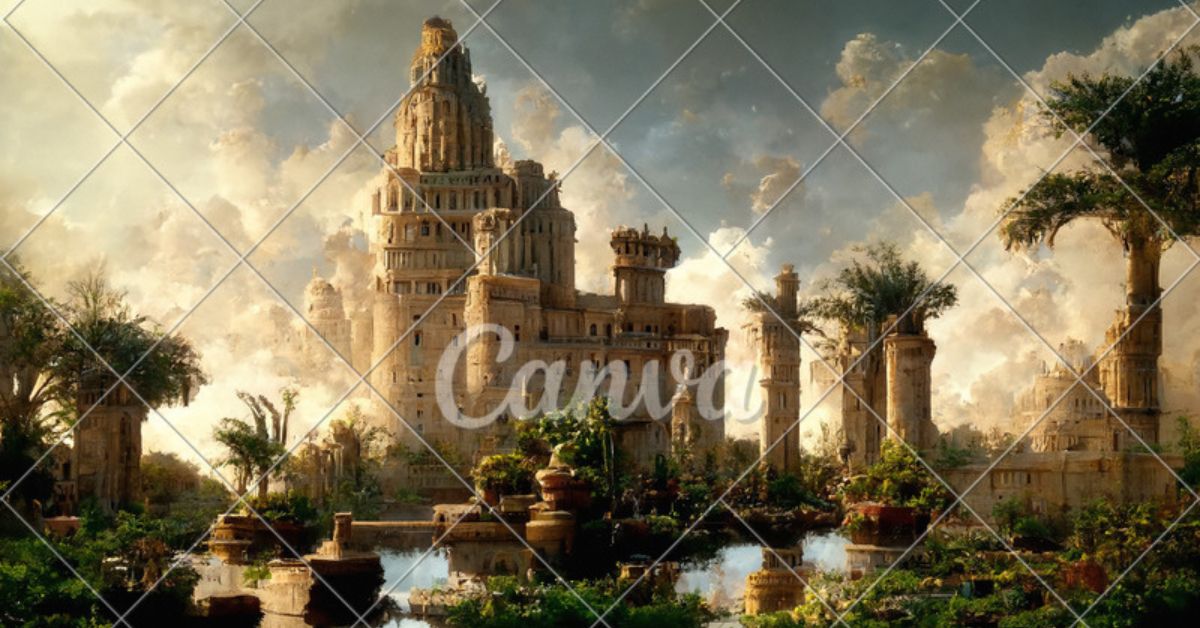Beautiful Babylon: A Glimpse into the Ancient Mesopotamian Jewel
In an era long past, nestled between the undulating courses of the Tigris and Euphrates rivers, stood a city that would shape the very fabric of history – Babylon. Rising from the sun-baked Mesopotamian plains, it was more than just a city; it was the embodiment of mankind's limitless potential.
Babylon wasn't just any city. Its prime location between the two great rivers made it a hub for traders and travelers. Caravans bearing exotic goods from far-off lands would converge at this midpoint, where cultures intermingled, stories were exchanged, and commerce thrived. Every corner of the city buzzed with activity, from the bustling markets to the grand palaces.
Hanging Gardens
Yet, it was the architectural splendor of Babylon that truly set it apart. Imagine, if you will, the legendary Hanging Gardens. Towering terraces lush with greenery cascaded from great heights. It was said that these gardens were built by King Nebuchadnezzar for his homesick queen, capturing a slice of her mountainous homeland in the flat terrain of Mesopotamia. These terraces weren't just a testament to the king's love; they showcased the Babylonians' mastery over construction and irrigation in an age when such feats were deemed impossible.
Ishtar Gate
Then, there was the radiant Ishtar Gate. Glinting in the Mesopotamian sun, this grand entrance painted in deep shades of blue and adorned with golden dragons and divine beings, welcomed all into the city. Every brick, every tile told a story – of gods, of heroes, and of the celestial dance between the earthly and divine.
Tower of Babel
And who could forget the Tower of Babel? An ambitious project that aimed to reach the heavens. While many today know it from biblical tales, where mankind's pride led to their languages being confounded, historical records and excavations hint at a ziggurat, dedicated to the city's patron god, Marduk. Its layers, rising one over the other, were perhaps a testament to Babylon's desire to be closer to the divine, a bridge between Earth and the cosmos.
Yet, beyond these magnificent structures, what truly made Babylon a beacon of the ancient world were its innovations. Here, in this vibrant city, the first script was etched on clay tablets - cuneiform. This wasn't just mere symbols; it was the dawn of recorded history, literature, and law. From the Epic of Gilgamesh, a tale of heroism and quest for immortality, to the meticulous records of grain and trade, cuneiform was the lifeblood of Babylon's intellectual spirit.
Speaking of intellect, Babylon's astronomers, gazing upon the starlit canvas of the night, laid the groundwork for the time systems we use today. Think of it, every glance at your watch, every turn of your calendar, bears the echo of a Babylonian stargazer counting the degrees in the celestial sphere or dividing the day into hours.
One cannot speak of Babylon and not mention the Code of Hammurabi, a stele of laws that governed everything, from trade disputes to family matters. Inscribed upon a diorite pillar, this code wasn’t just about punitive measures; it was built on the principle of 'an eye for an eye', ensuring fairness in judgment.
But what was life really like, walking the streets of this legendary city? The air would be thick with the scent of spices, the hum of traders haggling, and the distant strains of a lyre playing a soulful tune. The pantheon of gods was ever-present, with Marduk at the helm, and festivals in their honor filled the streets with joyous processions and dance.
Yet, as with all great empires, the sands of time brought change. Empires like the Assyrians and Persians left their mark on Babylon, and gradually, the once invincible city began its descent into the annals of history.
Today, while the majestic towers and gardens may have crumbled, Babylon's legacy is immortal. Its stories inspire, its innovations form the bedrock of modern society, and its spirit of discovery and wonder is a testament to human resilience and ingenuity.
In recent times, archaeologists have been piecing together this Mesopotamian puzzle, and efforts to conserve and celebrate Babylon's remnants have sparked a new wave of interest. Every shard, every relic, whispers tales of a time when mankind, in all its glory and folly, dared to dream big.
In the end, Babylon isn't just a city of brick and mortar; it's a story, an idea, a dream of what humanity can achieve. And as we delve deeper into its tales, we find that in its heartbeat, in its very soul, Babylon is beautifully and eternally alive.

Comments
Post a Comment